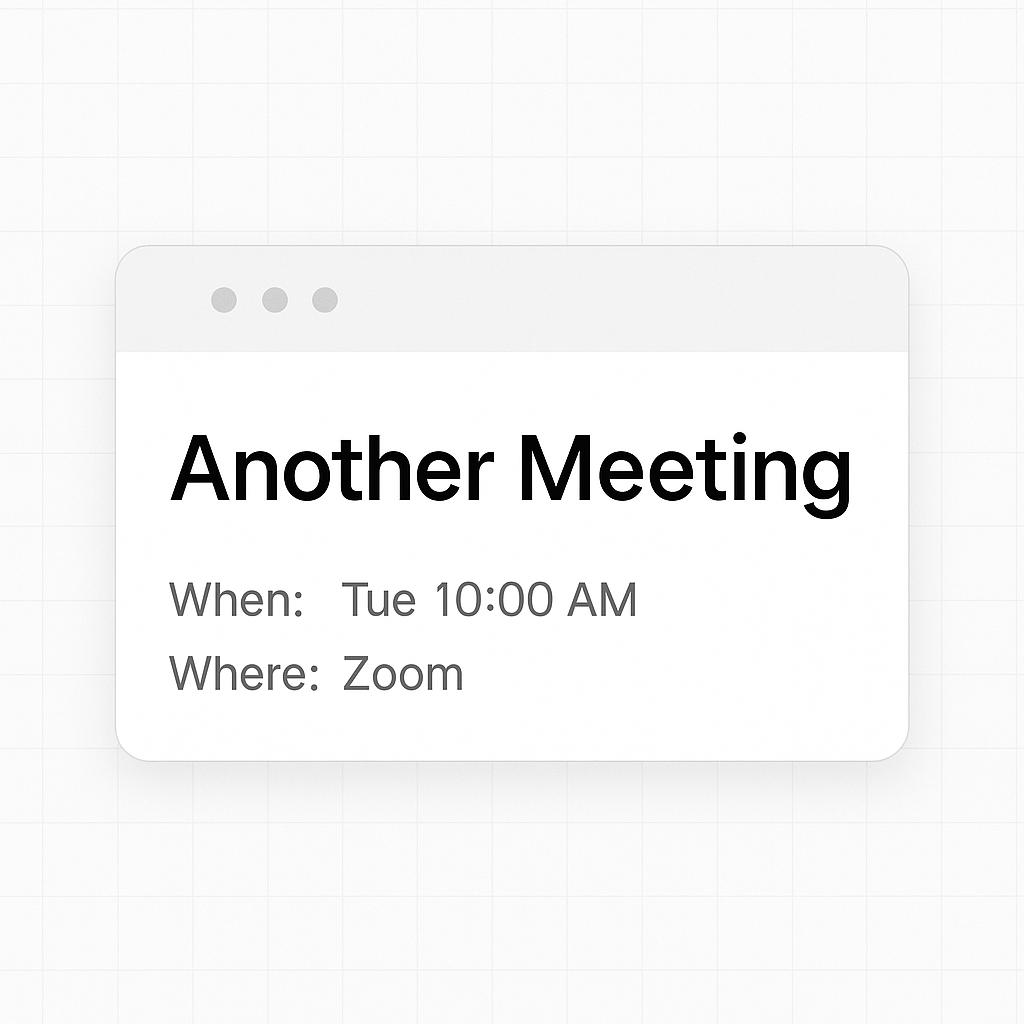Why most fail — and the 3 habits that make yours work
Why most fail — and the 3 habits that make yours work
We’ve all seen the meme: “This meeting could’ve been an email.”
It’s funny because it’s true. Most meetings suck. They feel like a waste of time, and usually, they are.
Meetings are kind of like a proctology exam. Awkward. Uncomfortable. And yeah… sometimes necessary. But most of the time? Avoidable if people knew what they were doing.
The real problem? No one ever taught us how to run a meeting that doesn’t suck. So we repeat the same bad habits we’ve seen over and over. The word meeting doesn’t help either. It sounds like something between a discussion and a TED Talk. But work meetings shouldn’t be either.
Here’s what’s actually wrong — and how to fix it without overcomplicating your life.
If your calendar invite says something like “Q2 Strategy” or “Ideas for 2026,” guess what? No one knows what that means.
People show up with no prep, no idea what you’re trying to accomplish, and no clue how to help. So they sit there silently or ramble off-topic. Either way, nothing gets done.
It’s not just your team.
According to research from Atlassian, 72% of meetings are considered ineffective, and 78% of people say they attend so many meetings it’s hard to get their actual work done. That’s a lot of wasted hours for something that’s supposed to make work easier.

Fix it: Set a clear goal. Put it in the invite. Then, send a quick reminder the day before with one or two specific outcomes. For example: “Goal for tomorrow’s meeting: Finalize the spring promo. We’re deciding on budget, timeline, and who’s doing what.” Now people know why they’re there, and what needs to happen by the end of the call.
Thanks to Zoom, it’s way too easy to blast invites to 15 people. But here’s the test: Would you gather all those people in a room for this? If the answer’s no, don’t do it virtually either.
Big meetings kill momentum. No one talks, no one decides, and half the group is half-listening while answering emails. That’s not a meeting, it’s a low-budget webinar.

Fix it: Keep it tight. 5 or 6 people max. Only the folks who are directly involved or need to weigh in. If others need to be kept in the loop, send a short summary afterward.
When there’s no host, meetings drift. People repeat themselves. Side conversations take over. And you run out of time before anything useful happens. Every meeting needs a lead — not a tyrant, but someone steering the ship. That person keeps things moving, asks the right people to speak, and makes sure you end with decisions and next steps.

Fix it: Assign a meeting host ahead of time. They don’t need to do a PowerPoint or anything fancy. They just open the meeting, guide the flow, and close it out with action items. Bonus: Rotate the role so it’s not always on you.
Meetings don’t suck because people suck. They suck because no one set them up to work.
The London School of Economics and Political Science found that 35% of business meetings are unproductive, costing U.S. firms about $259 billion every year. That’s not a scheduling issue. That’s a system issue.
The fix isn’t complicated. Be clear about the goal. Invite fewer people. Put someone in charge. Do that, and meetings stop being a waste of time. They start becoming a tool to build trust, get aligned, and make real progress.
Want meetings that don’t feel like punishment? Try this in your next one. Start with one change. Then stack the rest. You’ll be surprised how much better your team shows up when the structure doesn’t suck.
Nobody wants to waste time. Respect their time and they’ll respect yours.